The Iraq War was a protracted armed conflict that began with the invasion of Iraq on March 20, 2003, 1½ years after the traumatic 9/11 attacks, by a U.S.-led coalition.
The invasion began with a “shock and awe” bombing campaign. Iraqi forces were quickly overwhelmed as U.S. forces swept through the country. The invasion led to the collapse of the Ba’athist government of Saddam Hussein, who was captured in December 2003 and executed by a military court three years later.
But the war continued for much of the next decade as an insurgency emerged to oppose the occupying forces and the post-invasion Iraqi government. Worse still, Saddam’s former military officers morphed into ISIS, which became the Islamic State. (See “Blowback: ISIS leaders are former officers of Saddam Hussein’s army”) Although the United States officially withdrew from Iraq in 2011, we became re-involved in 2014 as the Iraqi government proved itself unable to cope with ISIS.
Altogether, the Iraq War exacted a toll of hundreds of thousands in casualties:
- An estimated 151,000 to 600,000 Iraqis were killed in the first 3–4 years of conflict.
- 6,045 Americans were killed: 4,491 soldiers; 1,554 contractors. Additionally, 76,106 Americans were wounded: 32,226 soldiers; 43,880 contractors.
The Iraq War cost the U.S. government more than $845 billion — $720 million a day, if one takes into account the long-term health care for veterans, interest on debt and replacement of military hardware, according to Nobel Prize-winning economist Joseph E. Stiglitz and Harvard public finance professor Linda Bilmes.
The George W. Bush administration based its rationale for war principally on the assertion that Iraq possessed weapons of mass destruction (WMDs) — yellow-cake uranium poison gas, biological weapons — and that Saddam’s government posed an immediate threat to the United States and its coalition allies. Saddam was also accused of of harboring and supporting al-Qaeda, the terrorist group identified as the instigator of 9/11.
The rationale for the Iraq War has since been discredited. But a newly-declassified report to the then-Joint Chiefs of Staff provides even more evidence that the Bush administration went to war with, at best, flimsy evidence of Iraq’s WMDs — a war in which 6,045 Americans lost their lives.
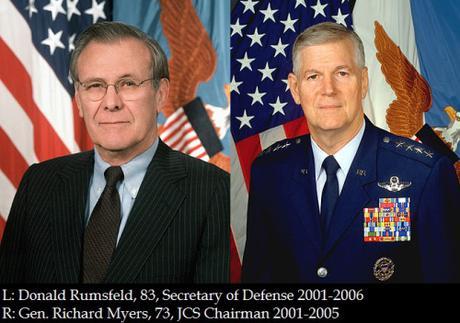
John Walcott, adjunct professor in the Walsh School of Foreign Service at Georgetown University, reports for Politico, Jan. 24, 2016, that on September 9, 2002, as the Bush administration began its public-opinion campaign for an invasion of Iraq, a classified report from Defense Secretary Donald Rumsfeld landed on the desk of the chairman of the Joint Chiefs of Staff (JCS), Air Force General Richard Myers.
The report began with these words:
“Please take a look at this material as to what we don’t know about WMD. It is big.”
The report was an inventory of what U.S. intelligence didn’t know about Iraqi weapons of mass destruction. The report admitted that what the U.S. didn’t know about Iraq’s WMD program ranged from 0% to about 75%. While the threat posed by a nuclear-armed Iraq was at the heart of the administration’s case for war, the JCS report conceded that:
“Our knowledge of the Iraqi (nuclear) weapons program is based largely—perhaps 90%—on analysis of imprecise intelligence.”
Myers already knew about the report because the Joint Staff’s director for intelligence had prepared it. Clearly, Rumsfeld’s urgent tone conveyed how seriously he viewed the report’s potential to undermine the Bush administration’s case for war.
But neither Rumsfeld nor Myers shared the 8-page report with key members of the administration such as then-Secretary of State Colin Powell or top officials at the CIA, according to multiple sources at the State Department, White House and CIA who agreed to speak on condition of anonymity. Instead, the report disappeared, and with it a potentially powerful counter-narrative to the administration’s argument that Saddam Hussein’s nuclear, chemical and biological weapons posed a grave threat to the U.S. and its allies, which was beginning to gain traction in major news outlets, led by the New York Times.
Below are screenshots of the 8-page report (I supplied arrows and underlining in red):
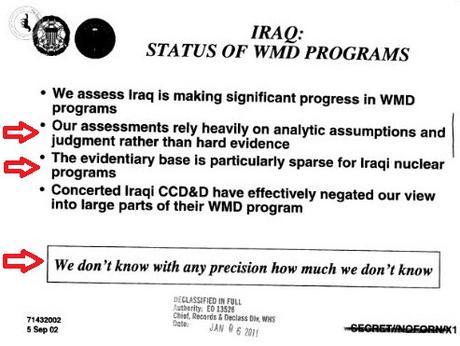
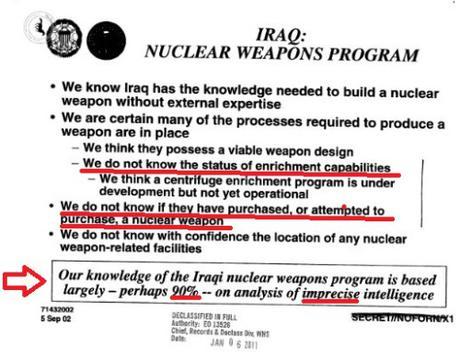
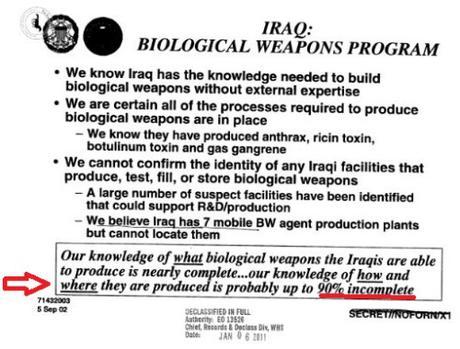
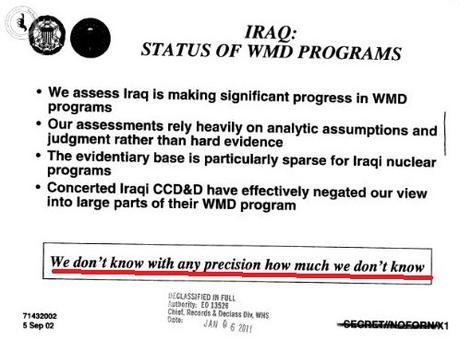
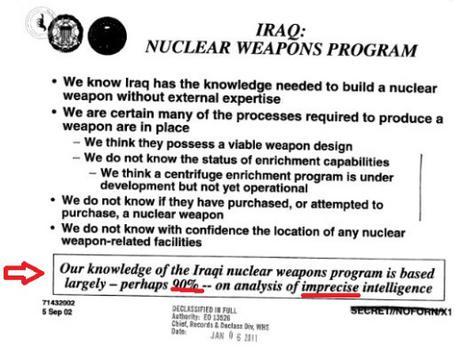
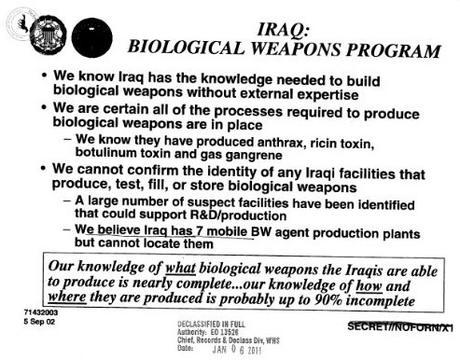
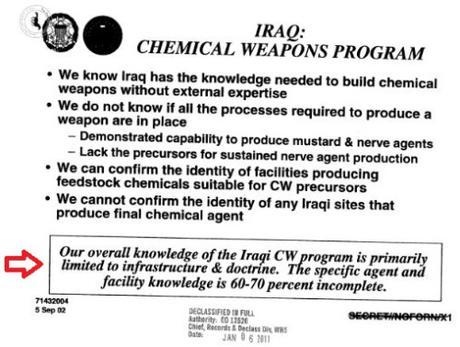
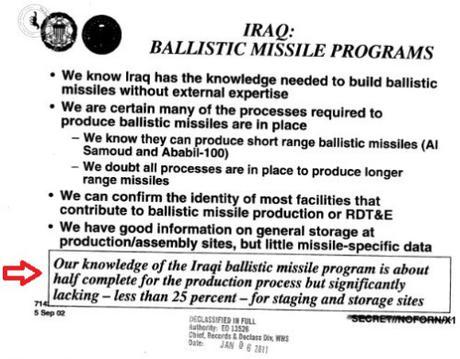
The Bush administration invaded Iraq — a war that cost the lives of 6,045 Americans and over $845 billion — with the justification that Saddam had Weapons of Mass Destruction, although both the U.S. Defense Secretary and the Joint Chiefs of Staff knew we had only flimsy hard evidence — that U.S. intelligence depended “heavily on analytic assumptions and judgment rather than hard evidence” and that “We don’t know with any precision how much we don’t know.”
Let that thought sink in . . . .
Meanwhile, the Neo-con warmongers in Congress are fast-tracking a resolution to give Obama unlimited war-making powers — unrestricted in time or geography.
See:
- Mitch McConnell fast-tracks authorization to give Obama unlimited war powers
- Obama administration refuses to declassify 28 pages of 9/11 report on foreign governments’ involvement
- Operation Northwoods: A true U.S. government conspiracy for those who mock conspiracy theories
~Eowyn

